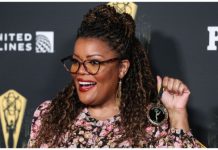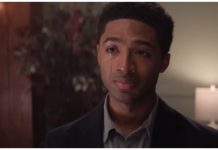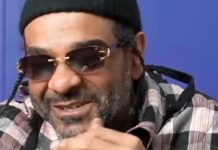*If you were old enough to fully process the footage of Rodney King‘s brutal butt-whooping by police in 1992, then you probably also remember the shocking aftermath it caused: the LA Riots.
The video reveals a helpless King, wrestled to the ground, raising his hands in self-defense as several patrol officers kick and flog him violently with their batons.
The beating landed King into a hospital room where he was treated for several broken bones and numerous lacerations to his bloodied face and body. Images of King’s injuries were publicized by the news media to boost ratings and trigger emotions.
King’s assailants – a dozen white patrol officers – should’ve been sentenced to jail for unlawful policing and misconduct. But after they were declared “not guilty” by an undoubtedly biased jury, residents of Los Angeles – where King lived – exploded with rage.
Crowds of angry rioters stormed the city and laid waste to multiple storefronts and public structures.
The riots, which began on April 29, 1992, lasted five days when mainly Black residents of Southern Los Angeles took to the streets not only to protest the King verdict but also years of racial and economic inequality.
“When the verdict came out, it was a stunner for people coast to coast. My jaw dropped,” Jody David Armour, a criminal justice and law professor at the University of Southern California, told NPR.
“There was ocular proof of what happened. It seemed compelling,” he says of the videotape. “And yet, we saw a verdict that told us we couldn’t trust our lying eyes. That what we thought was open and shut was really ‘a reasonable expression of police control’ toward a Black motorist.”
Protesters set fires in the streets, looted stores, destroyed liquor stores, grocery stores, retail shops, and fast-food restaurants. Some motorists — both white and Latino — were targeted and pulled out of their cars and beaten. A white truck driver named Reginald Denny was pulled out of his truck and beaten viciously by rioters. His head had been bashed in with a brick. Two Black bystanders pulled him from the crowd and took him to the hospital, saving his life.
Another contributing factor to the uprising: The same month as King’s beating, a Korean store owner in South Central Los Angeles shot and killed a 15-year-old African-American girl named Latasha Harlins. The store owners had accused her of trying to steal orange juice. “It was later discovered Harlins was clutching money to pay for the juice when she was killed. The store owner received probation and a $500 fine,” NPR reported. This outraged the surrounding Black community.
“It was an open campaign to suppress and contain the Black community,” lawyer and civil rights activist Connie Rice said in an interview with NPR. “LAPD didn’t even feel it was necessary to distinguish between pruning out a suspected criminal where they had probable cause to stop and just stopping African-American judges and senators and prominent athletes and celebrities simply because they were driving nice cars.”
The riots first began at Florence and Normandie, an intersection in South Los Angeles.
On the third day of the riots, King appeared publicly and asked Los Angeles residents to stop rioting. Outside of a Beverly Hills courthouse with his lawyer and asked “People, I just want to say, you know, can we all get along? Can we get along?”
MORE NEWS: Christian Keyes Claps Back at White Woman After She Slams His Praise of Black Women
More than 9,800 National Guard troops were called in, as were more than 1,100 Marines and 600 Army soldiers. From April 30 to May 4, 1992, the city was on a dusk-to-dawn curfew. It was lifted on the morning of May 4 when most schools, banks, and businesses were permitted to reopen.
There were more than 50 riot-related deaths, including 10 people who were shot and killed by LAPD officers and National Guardsmen. “More than 2,000 people were injured, and nearly 6,000 alleged looters and arsonists were arrested,” NPR reported.
More than 12,000 had been arrested, according to Wikipedia. And of those arrested, 36 percent were African-Americans and 51 percent were Latinos, according to the Rand Corp. There was at least $1 billion worth of property destroyed.
“In 1993, Stacey Koon and Laurence Powell, two of the four officers in the King case, were found guilty of violating King’s civil rights. They both served 30 months in prison and did not return to the police force,” NPR reported.
In 1994, the US District Court in Los Angeles awarded King $3.8 million in compensatory damages. In his lawsuit, King had demanded $56 million, or $1 million for every blow struck by the officers.
In June 2012, King, then, 47, was discovered unconscious at the bottom of his swimming pool. An autopsy revealed drugs and alcohol were in his system.
EUR Bonus Coverage
Out of the 1992 LA Riots came “Straight From The Streets,” a feature-length documentary film from videographer Keith O’Derek that chronicles some of the most monumental events in American history during the ’90s.
“SFTS” features some of the biggest names in hip hop music. Such as Snoop Dogg, Ice Cube, Cypress Hill, Ice T, DJ Quik, Kam, Dr. Dre, Lady Of Rage, Tha Dogg Pound, Denzel Washington and many others.
“Straight From The Streets,” available to rent/stream via Vimeo, is as real as it gets and is widely considered to be one of the best rap/hip hop documentary films ever made.
We Publish News 24/7. Don’t Miss A Story. Click HERE to SUBSCRIBE to Our Newsletter Now!






